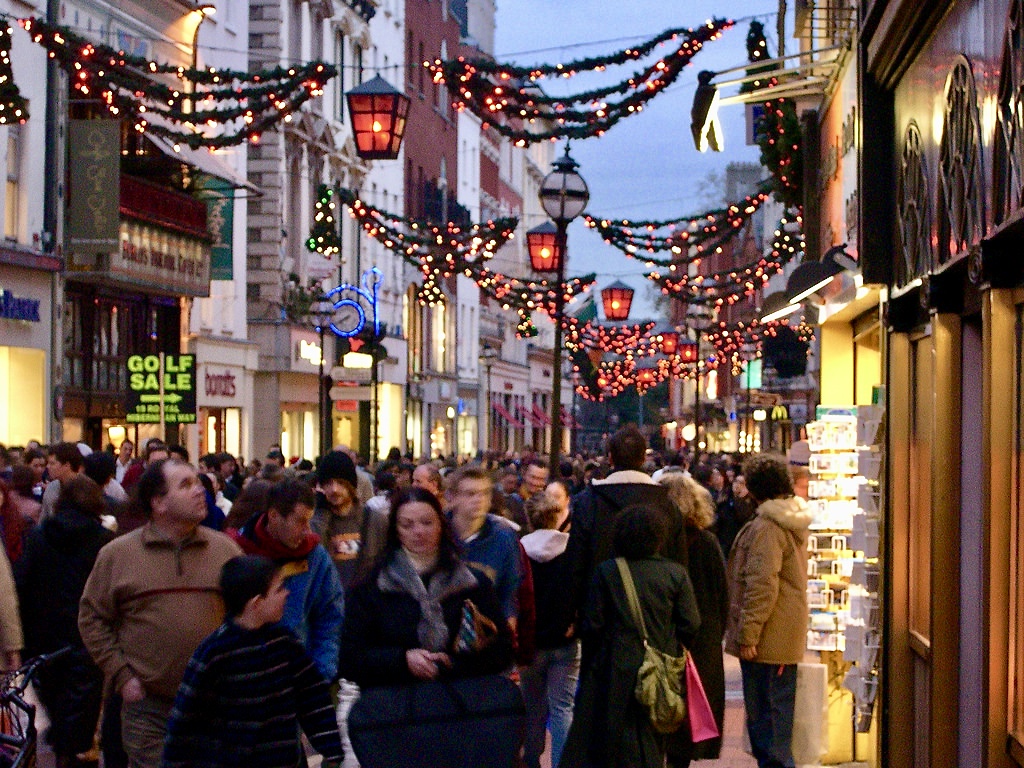A Season of Myths, Part Two
Come what may, the Christmas season is inescapable in America this time of year.
 Ed. Note: Sightings will be on “holiday hiatus” until Monday, January 7. We would like to thank our readers and contributors for their continued support and engagement this past year, and we look forward to bringing you more of the very best commentary on religion in public life during the year ahead.
Ed. Note: Sightings will be on “holiday hiatus” until Monday, January 7. We would like to thank our readers and contributors for their continued support and engagement this past year, and we look forward to bringing you more of the very best commentary on religion in public life during the year ahead.“Freedom is the will to be responsible for ourselves.”
-Friedrich Nietzsche, Twilight of the Idols (Götzendämmerung)
Come what may, the Christmas season is inescapable in America this time of year. Whether it is pictures of Santa Claus bowing over Jesus’s cradle, the so-called “war on Christmas” that troubles social conservatives about political correctness, the seemingly endless and too often insipid Christmas tunes piped into shopping malls, or the lights and bows draped across college campuses and down the main streets of our towns, the season with its undeniable Christian tint is everywhere manifest but perhaps not in as deep of hues as we usually think. But what does this mean? This is where the work of interpretation must begin.
I wrote in Sightings a month ago that Thanksgiving kicks off a “season of myths” for people in the USA, which runs through various religious holidays, including Christmas, to the New Year. Myth, I noted, is a useful category for thinking about public sightings of religion. Neither fanciful imaginings nor outright falsehoods, “myths” are used by scholars of religion and culture as a means to interpret a people’s lived reality. Myths deal with the stuff in life that matters, even and especially that which is important but otherwise confusing to us. Today’s column is Part Two of my posting on this season of myths where we’ll glance at the public sighting of Christmas.
What I did not note in my last column is that there are a variety of methods scholars use to interpret myths: linguistic, sociological, anthropological, psychological, historical, to name a few, but also, maybe surprisingly, philosophical and theological ones. Reinhold Niebuhr, for instance, wrote that the use of myth by theologians and preachers makes them “deceivers, yet true,” and no less than Plato was a maker of myths through the voice of Socrates. The question is, what method should we use in order to interpret Christmas within this season of myths?
Popular methods in the modern study of religion are mostly economic and political ones, not to mention psychological methods (Freud and Jung among others). I’ll note those first two in a moment, but I want to add to them—insofar as we are interested in the “public” sighting of religion—ethics, with a nod to Nietzsche’s aphorism above. How is our freedom, our capacity for self-government and thus the will to be responsible for ourselves, supported and/or undercut by the mythic inversions—that is, how myths retain their supposed meaning while actually reversing it—of the Christmas holiday season.
From Karl Marx and Max Weber onward until today, scholars have studied the political economy of religion. Their claims ranged from seeing religion as an ideological cover for the actual conditions of material existence to Calvinist Protestantism as a driver of the rise of capitalism. In other words, religion exists in the realm of ideas as a camera obscura to conceal material conditions and to legitimate power structures (Marx), or it is not reducible to those conditions even as it motivates human conduct (Weber). Some recent scholars, one thinks of Robert Nelson, have argued that the economy itself is a religion, while others, notably Robert Bellah, seek to show the social force of religion in human evolution. And the debate about religion and political economy has gone global. Economists, like Sriya Iyer, explore the economics of religion in India; there are debates about the relation of the Orthodox Church and the Russian government; and a cottage industry has formed around the theme of “Political Theology” and so religion’s role in validating state sovereignty. Whether or not we live in secular or post-secular times, it is hard to doubt the entanglement of religion, economics, and politics.
But what does all of this have to do with Christmas in the USA? Aside from worries about a “war on Christmas” at the level of social conventions, the fact is that early Christians did not celebrate the day. Celebrations of the winter solstice were common among the Norse and Germans. In ancient Rome there was Saturnalia in honor of the god of agriculture in which hedonist revelry was linked to the inversions of social roles so that peasants ruled the city for a month. The birth of Mithra was celebrated on 25 December, the god of the unconquerable sun. But as Christianity replaced Roman, Nordic, and Germanic religions, it slowly subsumed the celebration linking it to Jesus’s birth. This is the first inversion of the myth, imbuing it with a different religio-cultural meaning, even if, under Cromwell and the Puritans, it was outlawed in the 17th century. It was made a federal holiday only in 1870. Thus the inversion was from pre-Christian to Christian meanings of the day. (Here is a handy account of this history.) Despite its Christian overlays, it is hard not to sense that parts of this pre-Christian history are still embedded in Christmas with the celebrations of lights, the revelry of people stampeding Walmart, and the wild excesses of the season. Like every inversion of “myth,” the Christian inversion was never complete.
However, more is going on than just the Christian inversion of ancient beliefs and practices. Everyone can admit that the rampant consumerism of this season might be good for “the economy.” “Jesus helps save the GDP.” But this also hollows out the soul of the Republic, in tangible political and civic ways. While thinkers like Marx and Weber accented the economic functions of religion, and political theologians its political task, something was missed that is now, with the proper lens, open to view. With thanks to the 19th-century philosopher G. W. F. Hegel, we see how the economy can undermine political life in advanced capitalist societies, undercutting free and democratic association through the unrelenting privatization of economic participation. This is manifest in this Christmas season even if it is a profound inversion of its Christian meaning? How is that so?
The unrelenting consumerism of our nation is profoundly individualizing. Customers attack the doors of “big box” stores, log on to Amazon, are urged to buy gifts for themselves, re-gift things to others they do not want, and, in the process, often suffer from anxiety and isolation. Many folks go to worship services and find some solace in a larger community, but then they quickly retreat to the privacy of their homes, families, anxiety, and toil. That is all well-known. Yet the hard consumerism of our day, driven by ostensibly religious reasons, makes it increasingly difficult to band together as political forces aimed at the democratic ideal of self-government, the will to be responsible for our common life. To be sure, important movements like “#BlackLivesMatter” and “#MeToo” have shaped the political landscape. Yet they also struggle against the political and civic entropy at work among us as consumers seeking what we individually want.
So, here is another inversion of Christmas, but this time not a Christian one. The myth that “we the people” are a mighty experiment in self-government conceals the atomizing power of strident consumerism that has increasingly become the reality of Christmas. From civic organizations to state and national politics, people retreat into private worlds. What Americans want, as Tocqueville saw early on, is the “equality of conditions,” that is, having the same stuff as others. And if that is so, then freedom is subverted under a myth supposedly about the will to share with and give to loved ones and the needy. The privatizing force of hard consumption is the real war on Christmas, precisely because it confuses the will to freedom—self-rule—with the satiation of individual desire.


